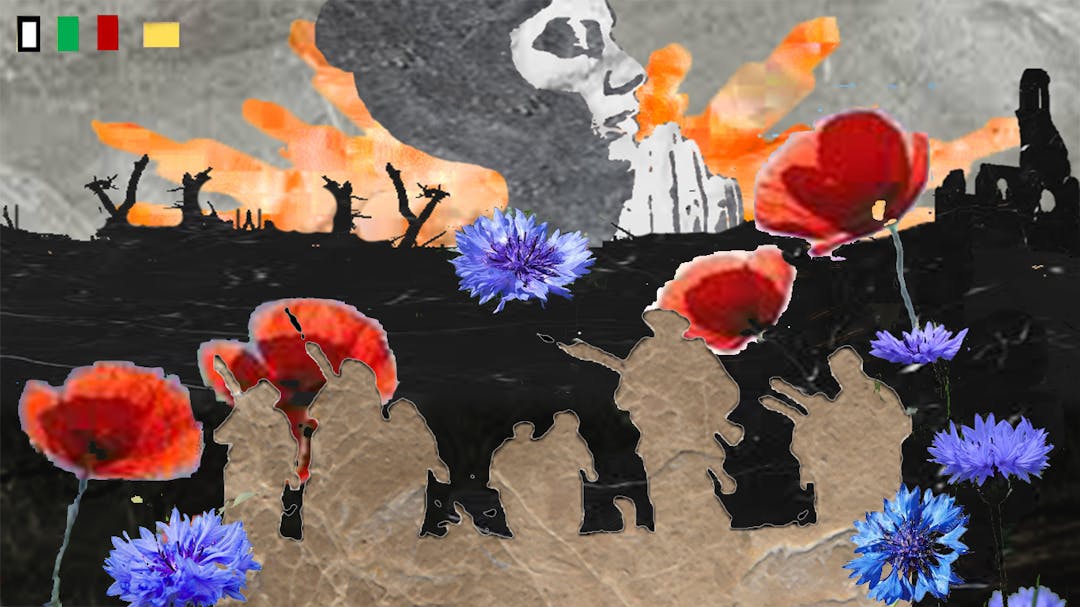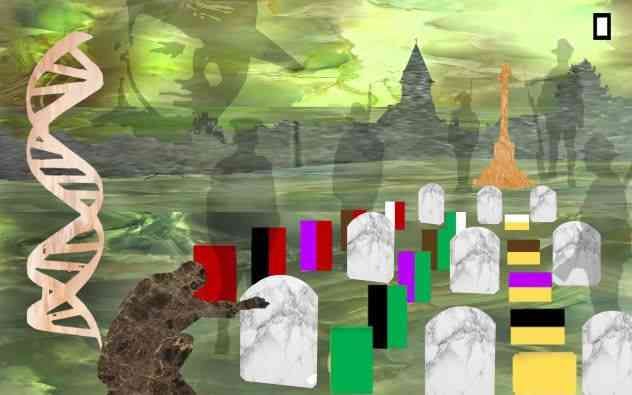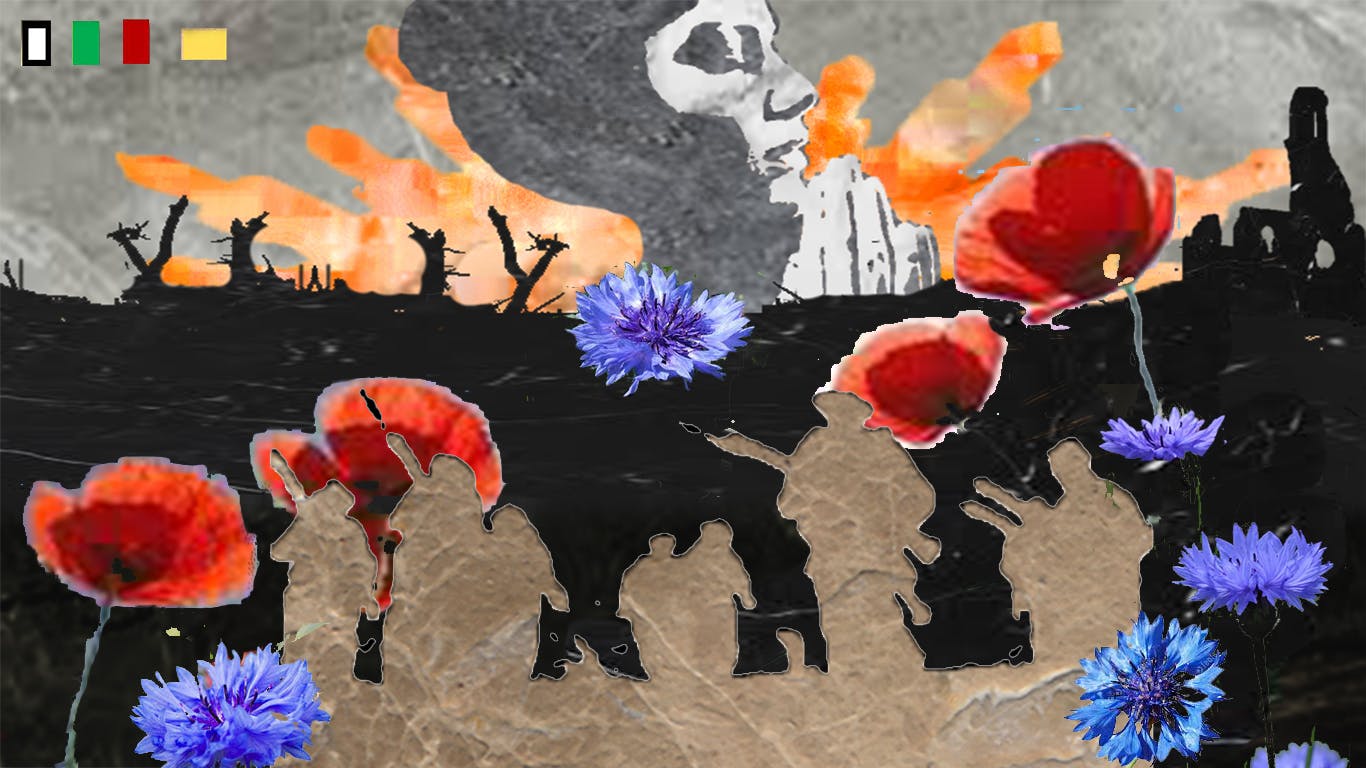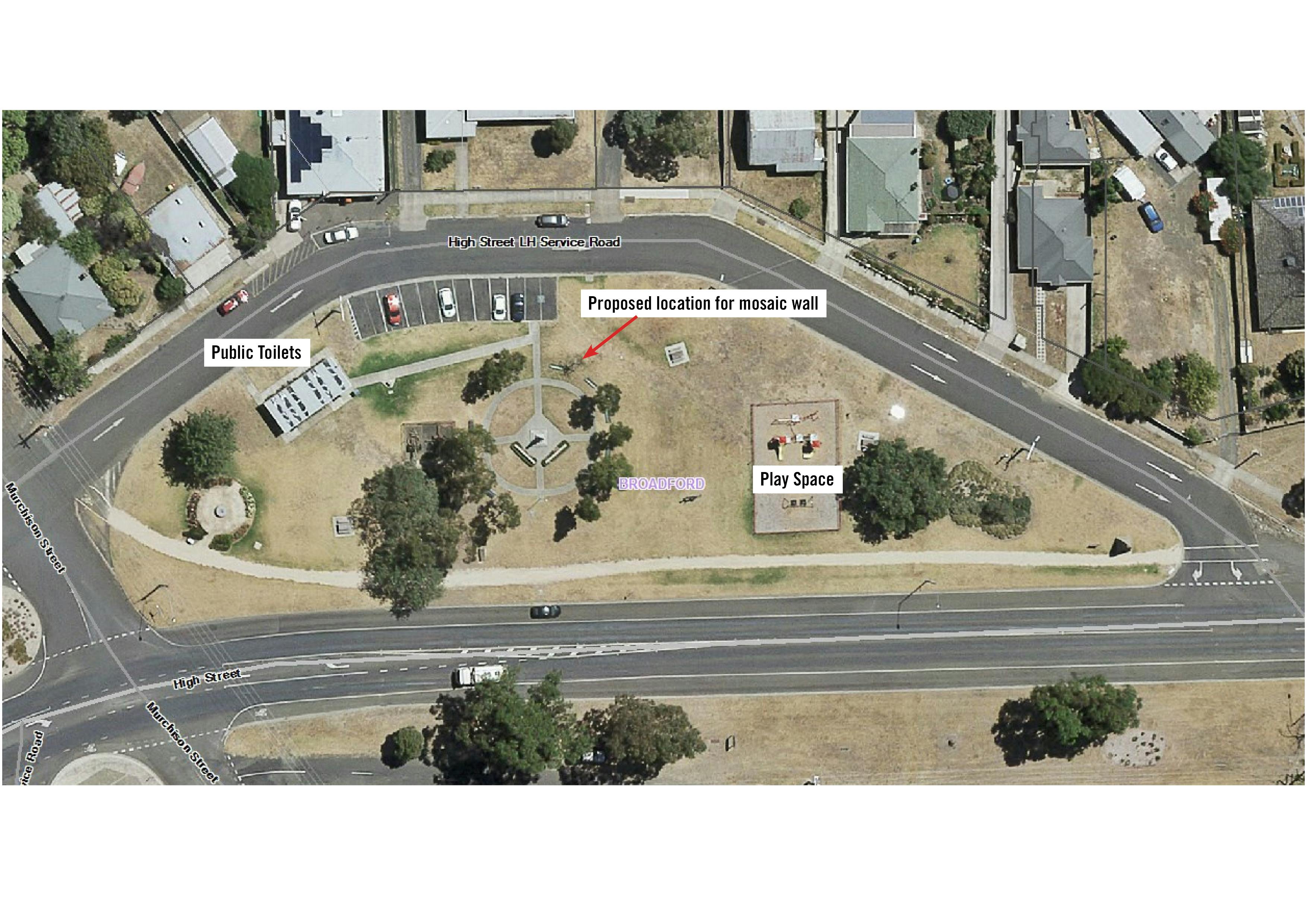Broadford Memorial Park - Fromelles mural
Consultation has concluded

The Broadford RSL is proposing a mosaic art mural at the Broadford Memorial Park.
The proposed mural has two sides. One side commemorates the Fromelles Battle in the First World War. The other side commemorates the present day efforts to identify the missing soldiers buried there.
While this is an RSL project, it is on public land managed by Council. The land is located near other public facilities including a playground, toilets and a bushfire memorial.
Council is therefore seeking community input on the proposed designs and location. Survey closes 9 September and a drop in session will be held on site on 26 August.
Depending on the response to community consultation, the project will either:
- proceed to final approval
- or further discussions with the Broadford RSL will occur to change the artwork or location that is agreeable to all parties.
The mural will be subject to final approval by Council.
Funding partners
The project is funded by the Broadford RSL and supported by the Victorian Government and the Victorian Veterans Council through the Victoria Remembers grants. Mitchell Shire Council is providing in-kind support.










